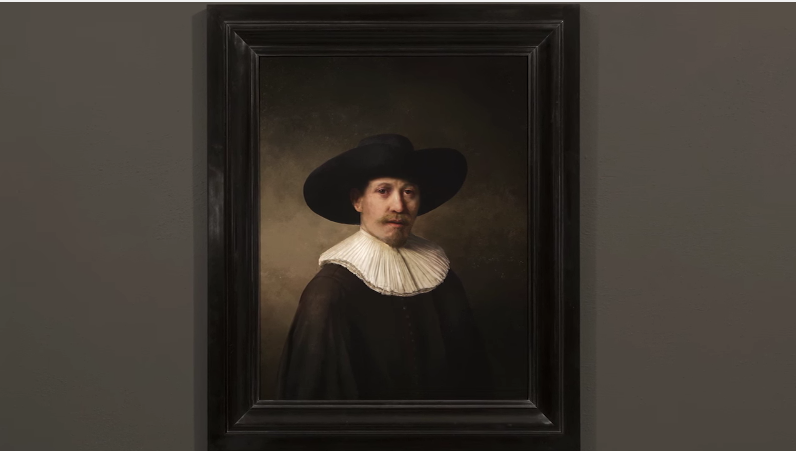
From the subdued color palette to the delicate touches of light and shadow reflecting off the man in a 17th-century Dutch costume, the painting could easily be mistaken for a recently discovered Rembrandt van Rijn masterpiece.
But this new work was not created by human hands, let alone those of Rembrandt, who died in 1669. It was painted by an artificially intelligent 3-D printer that pored over its art to produce a piece unlike no other in the past 350 years.
On Tuesday in Amsterdam, this artwork, called The Next Rembrandt, will be unveiled for the first time. The piece is the result of an 18-month collaboration by a team of data scientists, engineers and art historians from several institutions, including Microsoft, Delft University of Technology and two Dutch art museums, the Mauritshuis in The Hague and the Rembrandt House Museum. It consists of 148 million pixels, based on an analysis of 346 paintings from the painter's oeuvre.
The Next Rembrandt is not meant to be the perfect Rembrandt painting but rather the most average. Although Rembrandt also painted biblical scenes and landscapes, the team settled on a portrait, his most common subject. Then the project narrowed its focus to the period—between 1632 and 1642—when he was at his peak.
Finally, it outlined the fictional man in the portrait, from his age, dress and facial hair to the direction his head is pointing. The consensus, taken from Rembrandt's work, was a Caucasian man with brown facial hair, between the ages of 30 and 40, wearing black clothes with a white collar and a hat, facing to the right.
"You have this enormous amount of technical data from all these paintings from various collections," says Delft University of Technology professor Joris Dik. "And can we actually create something out of it that looks like Rembrandt? That's an appealing question."
To get the Rembrandt feel, facial recognition technology helped break down hundreds of Rembrandt paintings to pixels based on light composition and painting material. Once a 2-D rendering of the portrait was created, a height map was created so that the 3-D printer could mimic Rembrandt's painting patterns to perfectly replicate his texture and his details of light and shadow. The final product has 13 layers of ink piled on top of one another.
The Next Rembrandt has not been received with open arms from the art community so far. Jonathan Jones, an arts writer for The Guardian, lambasted the project, describing it as something worse than an April Fools' joke.
"What a horrible, tasteless, insensitive and soulless travesty of all that is creative in human nature," Jones wrote. "What a vile product of our strange time when the best brains dedicate themselves to the stupidest 'challenges,' when technology is used for things it should never be used for and everybody feels obliged to applaud the heartless results because we so revere everything digital."
While Jones argues that this machine-painted Rembrandt facsimile and others like it could never match the work of the human creative mind, Microsoft engineer Ron Augustus—who participated in the project—took a contrary stance.
"Data is used by many people today to help them be more efficient and knowledgeable about their daily work, and about the decisions they need to make. But in this project, it's also used to make life itself more beautiful," Augustus says. "It really touches the human soul."
Uncommon Knowledge
Newsweek is committed to challenging conventional wisdom and finding connections in the search for common ground.
Newsweek is committed to challenging conventional wisdom and finding connections in the search for common ground.
About the writer
Seung Lee is a San Francisco-based staff writer at Newsweek, who focuses on consumer technology. He has previously worked at the ... Read more
To read how Newsweek uses AI as a newsroom tool, Click here.








